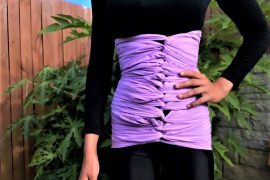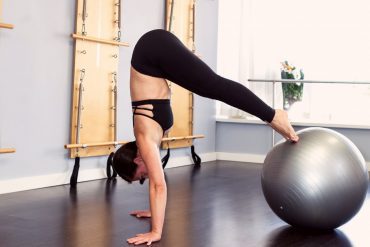6) Keep the jaw relaxed
Keeping the jaw soft and relaxed actually relaxes your pelvic floor. So sighing out, yawning, singing, blubbering the lips and making low sounds (like ahhhh, ooohhhh) can all help your jaw to unclench and release, and your pelvic floor to release too. Get your birth partner to keep reminding you to do this in your labour. As heard recently: “Floppy face, floppy fanny”!!
7) Labour in water
Immersing yourself in a large warm bath is the ultimate relaxation image. During labour, warm water has a multitude of benefits for relieving discomfort, whether a birth pool, bath or shower. A Cochrane Review in 2009 determined there were no differences in tearing between birthing in water than land, yet many midwives and women swear by warm water softening perineal tissues and easing the sensation of the crowning stage.
8) Listen to your midwife
Follow the midwife’s lead, to let your baby come really gently. So once the baby’s head is very much near the crowing stage, then you might be encouraged by your midwife to slow back a little with the pushing, and more feel like you are breathing baby down, to move baby slowly and gently. Which reduces the chance of a tear. The midwife may have one hand on baby’s head, and one hand on your perineum to support this which helps prevent tearing. Once the baby’s head is out, the midwife might take the hands away. And then do the same thing to support the perineum when the shoulders come out. Listen to your midwife, she is there to support you.
9) Pelvic floor exercises
Common advice to pregnant women is to do pelvic floor exercises to connect in with and to strengthen the muscles in the pelvic floor. This is so important to continue to do after birth, so that the pelvic floor muscles can work effectively and you are less likely to experience stress incontinence (weeing yourself) when you cough, sneeze or jump.
It’s really important when we are pregnant to know where the pelvic floor is, and as well as how to lift and tighten it, and how to relax and release it.
10) Positions for the actual birth
The position you are in when pushing has a big influence on whether you are more likely to tear. Lying down, lithotomy position (lying down with legs held up) or semi-reclining positions puts pressure onto your tailbone and perineum, reducing the size of the pelvic floor and increasing the likelihood you will tear.
The best position for birthing your baby is the one you choose instinctively for yourself and you feel most comfortable in. Women who are free to move about during labour will find the position that helps them cope with contractions at each particular stage. Some women like to float free of gravity in water, others like to have their feet firmly planted on the ground. We talk about “active birth”, movement and positions in my For Modern Mothers Hypnobirthing courses and you get a guide booklet to this too.
Midwife Thinking says, “I have noticed that when women are left to birth instinctively they will often move from a squatting position – if they got into one – into a hands-knees position just before the head crowns.”
The least stressful positions for the perineum include:
– On all fours (on hands and knees).
– Leaning forward in a supported standing, kneeling, or sitting position.
– Lying on your side.
While squatting and kneeling are useful upright positions, if the woman’s knees are very wide apart, the perineum is being stretched sideways and may increase the likelihood of tearing.
11) Breathing rather than pushing out baby
During the “down” stage of labour (pushing stage), the fetal ejection reflex is moving the baby down and out of the uterus, into the vagina and out into the world. These strong pushing surges (contractions) are involuntary and will move the baby out without the mother pushing or bearing down. Women have given birth in their sleep and while in comas! Yes really!
When you feel the urge to push, this is actually your uterus already contracting and pushing the baby down. Most women have an instinctive response to bear down during these contractions. You don’t have to push with your whole body while holding your breath and clenching your jaw in order to birth your baby. This reduces oxygen to you and your baby, and tenses your muscles instead of relaxing them – remember your baby needs to come out, not be held in. Breathing down with your contractions allows your baby to descend slowly and with less trauma to your pelvic floor.
That’s why we learn the brilliant “down” breathing technique in hypnobirthing, which helps you to connect with your body and breathe rather than push baby out.
As your baby’s head pushes onto the pelvic floor, the perineum begins to fan out and stretch. The baby’s head is crowning and many women experience an intense stinging sensation – the “ring of fire”. The body is signaling to the brain to stop, slow down and let the perineum and labia stretch to accommodate the baby’s head. Often this stage can be very intense and you may feel as though you just have to bear down and get the baby out right now.
12) A warm compress on the perineum
Warm compresses have been shown to help decrease the incidence of tearing, which is wonderful news because using warm compresses is SO SIMPLE. Take a flannel, submerse it in the very warm water, wring it out and then place it on the perineum to support mum while her baby is crowning.
The warmth increases the blood flow to the area and if counter pressure is used can feel very relieving. Some women find the warm compress very comforting and others prefer their care providers adopt a hands off approach. It’s your choice of course.
13) Get huge!
This is probably my favorite one! The amazing and legendary midwife Ina May Gaskin suggests women use this mantra: “I can get huge”, in the second stage labour. If you feel and believe that your vagina can soften, release, open and “get huge” and repeat this to yourself, then you can open fully and help your body birth your baby.
“Where the mind goes the body follows,” as Katharine Graves the founder of KG Hypnobirthing famously always says.
So although nothing can guarantee that we won’t have a graze or tear in birth, you CAN do a lot to support yourself as we have seen. Knowing that there are lots of techniques and things you can do in both pregnancy and in labour to reduce the chance of it happening can be hugely beneficial in helping you feel more confident and positive about your labour and birth, and less worried and fearful I hope.
Anything you can do to reduce stress and tension during labour will really help, and people there to support you to find the positions and methods that I have shared with you to help to maximise your chance of avoiding a tear.
I really hope that this blog post has helped with that, as I really love sharing information like this and helping you to have the most positive and confident pregnancy and birth possible that is right for you and your baby. Do check out my other birth and pregnancy blog posts here, and to learn ALL the brilliant hypnobirthing techniques, and to reduce ANY fears about birth and have a calm, confident and positive birth experience do come and join me in person for my For Modern Mothers Hypnobirthing & Birth Preparation course.
I also have a YouTube channel with lots of tips and techniques on too here – www.formodernmothers.video
Originally published HERE.
Susan Bradley is the founder of For Modern Mothers, dedicated to helping you have a positive pregnancy, labour, birth and motherhood. My aim is that I simply want to help you feel better in body, heart and mind, by learning amazing skills and practical techniques which really support you on your journey to motherhood and beyond. I do this though teaching Pregnancy Yoga, Hypnobirthing & Complete Birth preparation courses, Mum & Baby Yoga, and Baby Massage classes, workshops and private lessons – in and around York, UK. You can find me online at www.formodernmothers.com and on Facebook www.facebook.com/formodernmothers.










